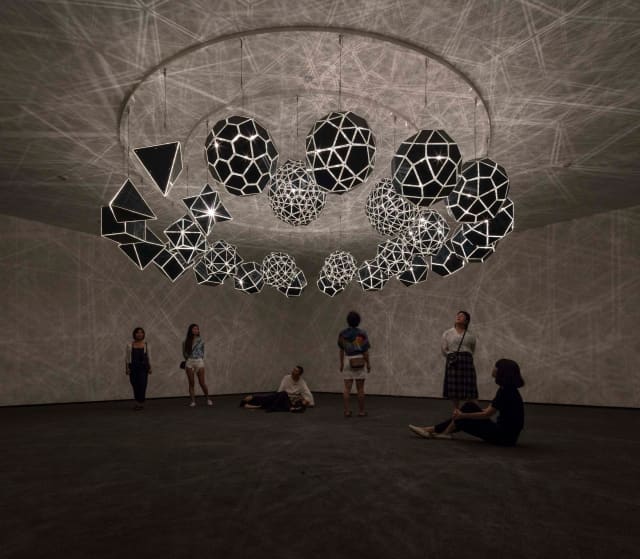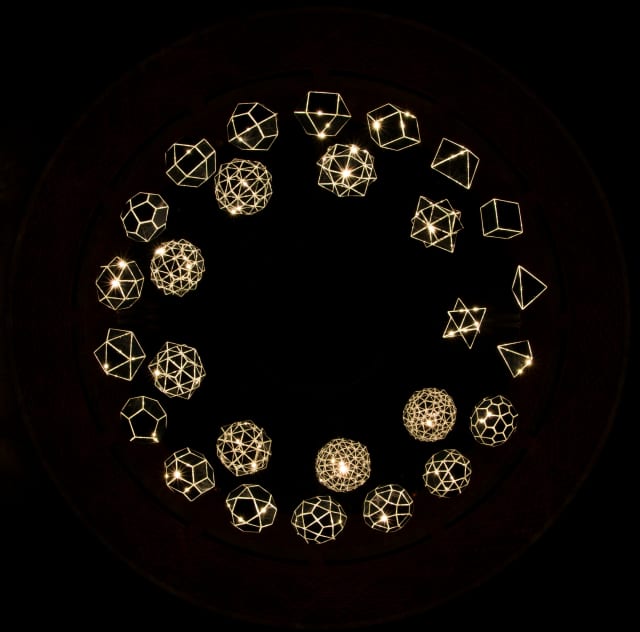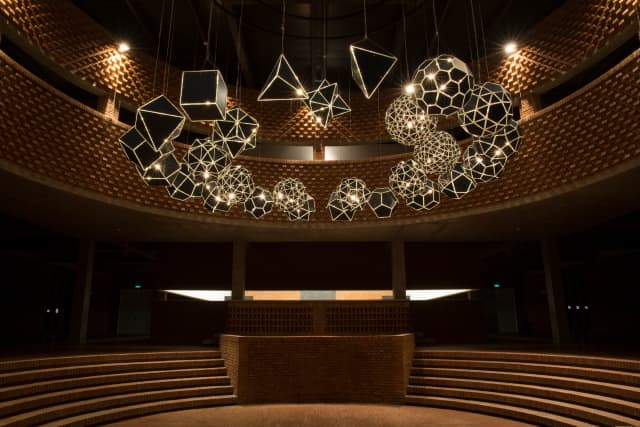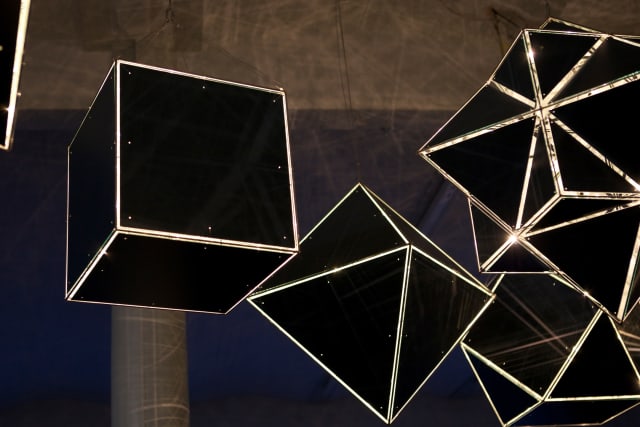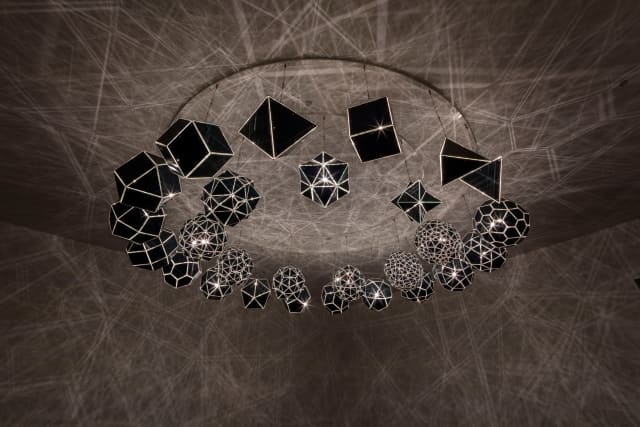Your sound galaxy suspends a group of twenty-seven polyhedrons from the ceiling in two horizontally concentric circles. Each polyhedron is made of a stainless steel frame clad in mirrored glass that has been turned inward so that the blue-grey backs of the mirrors act as the faces of the solid. A single halogen light mounted inside each polyhedron is multiplied by the reflective interior into a twinkling glow that escapes through the gaps in the frames.
The polyhedrons are organisable into nine ‘families’ of three related forms. In these families, two of the three polyhedrons are designated as duals of one another, meaning that the number of vertices on the one polyhedron is equal to the number of faces on the other. Constructing two duals within each other creates the third polyhedron of the family, called a compound. The dual solids are all arranged in the outer circle, with their respective compounds aligned between each pair and hanging in the inner circle. Beginning with the two pyramid-shaped tetrahedrons in the outer circle – the first and simplest set of dual solids – the work exhibits a clear sequence in a clockwise direction, as the polyhedrons grow increasingly more complex and multi-faceted. Despite this, the visual logic between a given pair of dual solids and their compound remains intuitive.
The work’s title gestures to a recurring worldview in Western metaphysics, shared by thinkers as diverse as Pythagoras, Plato, Boethius, and Johannes Kepler, and which describes the motion of celestial bodies in terms of a natural harmony and mathematical music. As the viewer walks beneath the artwork, the lights sparkling through the cracks in the frames above produce an effect whose visual rhythms, dynamics, and counterpoint are suggestive of a musical composition. Shifting perspectives, the viewer creates his or her own luminous orchestration of this silent sound galaxy.
